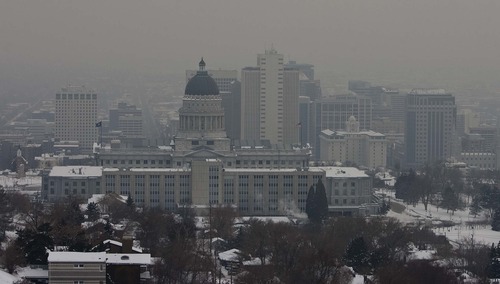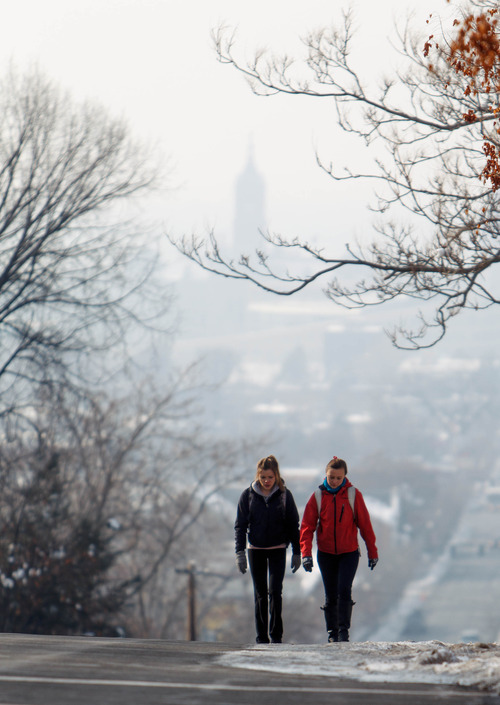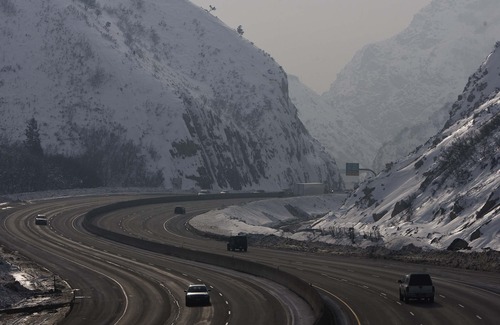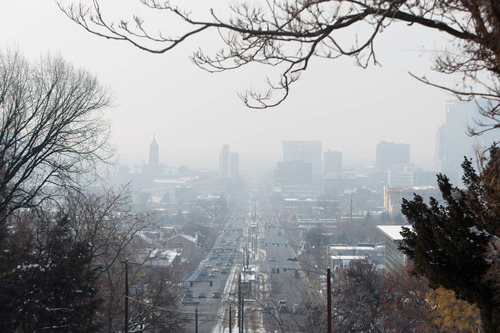This is an archived article that was published on sltrib.com in 2013, and information in the article may be outdated. It is provided only for personal research purposes and may not be reprinted.
An aortic dissection is a catastrophic failure of the big artery leading out of the heart. It can kill in minutes and requires prompt surgery if the patient is to have any chance, and even then half of all cases result in death.
During the Wasatch Front's inversions in recent years, Chris Cowley and colleagues have treated far more than the usual numbers of aortic dissections, including five cases in recent weeks.
"It's curious to see a clustering of patients with a rare disorder around our bad air-quality day," said Cowley, a cardiovascular anesthesiologist employed at Intermountain Healthcare's Murray hospital.
Cowley was among several doctors speaking at the Capitol Wednesday, where Utah Physicians for a Healthy Environment called on Gov. Gary Herbert to declare a public health emergency and take strong steps to curb emissions during the inversion season, which runs from December to March 15. Meanwhile, the air quality outside the Capitol remained the nation's worst for the fifth straight day.
"I see more kids in my office wheezing and coughing," pediatrician Ellie Brownstein said. "It's like we're all smokers."
This winter's inversions have persistently concentrated particulate matter in the air over much of northern Utah to dangerous levels, more than triple federal thresholds at times.
"The State of Utah and its agencies will absolutely continue to enforce all air quality regulations to their fullest extent," Herbert spokeswoman Ally Isom said Tuesday in an email. "While the current air quality does not meet legal criteria to declare an official public health emergency, we should all be actively doing our part to minimize emissions."
The health menace lurking in this week's unsightly sooty air is particulate matter smaller less than 2.5 micrometers, better known as PM-2.5. Tiny particles penetrate into the gas-exchange regions of the lungs, triggering arterial inflammation and elevated blood pressure. Exposure raises the risk of heart attack, prompting doctors to urge those with heart conditions to stay indoors during inversions.
Brian Moench, founder of Physicians for a Healthy Environment, estimated that poor air quality contributes to 1,000 to 2,000 premature deaths each year along the Wasatch Front.
"The memory of the public and the Legislature is very short on this issue," Moench said. "The health consequences don't end when the skies clear up."
In a letter signed by 100 Utah doctors, his group asked state leaders to waive public transportation fares during inversions, reduce freeway speed limits to 55 mph and require industrial emitters to cut production by half.
Such measures would take a toll on the economy, but the impacts of bad air are far worse, and in may ways incalculable, said group member Kirtly Jones, a professor of medicine at the University of Utah.
"Some women who are now pregnant will miscarry. Some will develop pre-eclampsia and their babies will be born early," Jones said. "Five days of bad air is enough to program the fetus to have difficulties. ... It's enough to make sure a kid won't do well in school."
Another group, the Davis County Community Coalition, insisted Utah allow no net increase in emissions along the Wasatch Front.
"We're asking the governor and the Legislature to provide the leadership and a forward-thinking path to prosperity," said group leaders Cecily Price-Huish, who joined the doctors in submitting a letter to the governor signed by 700 Davis residents.









